Chapter: 12th Physics : Electromagnetic Induction and Alternating Current
Analogies between LC oscillations and simple harmonic oscillations
Analogies between LC oscillations and simple harmonic oscillations
(i) Qualitative treatment
The electromagnetic
oscillations of LC system can be compared with the mechanical oscillations
of a spring-mass system.
There are two forms of
energy involved in LC oscillations. One is electrical energy
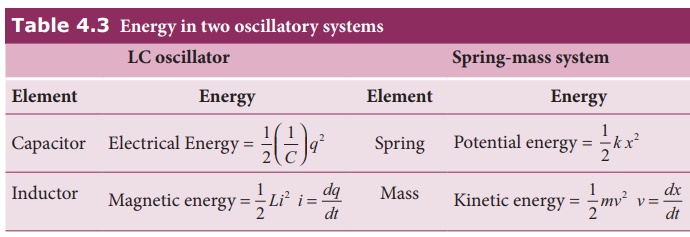
Likewise, the mechanical
energy of the spring-mass system exists in two forms; the potential energy of
the compressed or extended spring and the kinetic energy of the mass. The Table
4.3 lists these two pairs of energy.
By examining the Table
4.3, the analogies between the various quantities can be understood and these
correspondences are given in the Table 4.4.
The angular frequency of
oscillations of a spring-mass is given by (Refer equation 10.22 of section
10.4.1 of XI physics text book).

From Table 4.4, k → 1/C and m → L. Therefore, the angular frequency of LC oscillations is given by

(ii) Quantitative treatment
The mechanical energy of
the spring-mass system is given by

The energy E
remains constant for varying values of x and v. Differentiating E
with respect to time, we get

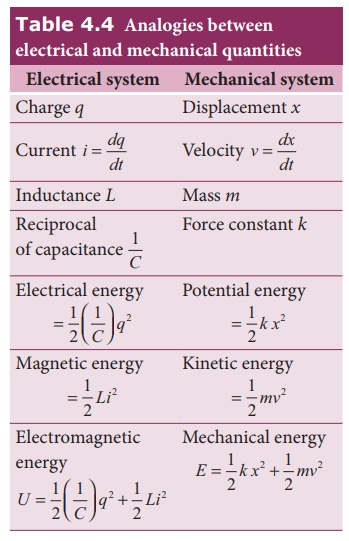
This is the differential
equation of the oscillations of the spring-mass system. The general solution of
equation (4.68) is of the form

where Xm
is the maximum value of x (
t ), the angular frequency
and Ď• the phase constant.
Similarly, the
electromagnetic energy of the LC system is given by
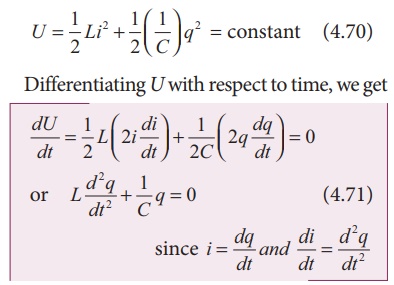
The general solution of
equation (4.71) is of the form

where Qm is the maximum value of q ( t ), the angular frequency and Ď• the phase constant.
Current in the LC circuit
The current flowing in
the LC circuit is obtained by differentiating q(t) with respect
to time.
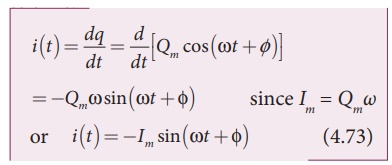
The equation (4.73)
clearly shows that current varies as a function of time t. In fact, it
is a sinusoidally varying alternating current with angular frequency ω.
Angular frequency of LC oscillations
By differentiating
equation (4.72) twice, we get

Substituting equations
(4.72) and (4.74) in equation (4.71), we obtain
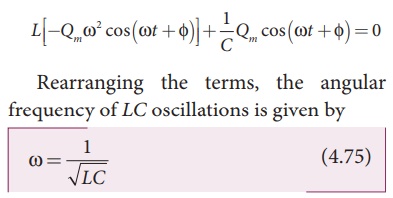
This equation is the same as that obtained from qualitative analogy.
Oscillations of electrical and magnetic energy
The electrical energy of
the LC oscillator is
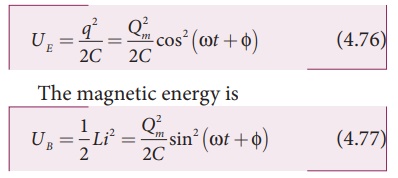
If the two energies are
plotted with an assumption of f =
0 , we obtain Figure 4.58.
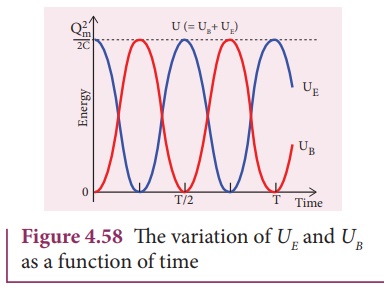
From the graph, it can
be noted that
(i) At any instant UE+UB=Qm2/2C
= constant
(ii) The maximum values of UE
and UB are both Qm/2C
(iii) When UE is Maximum, UB is zero and vice versa.
Related Topics